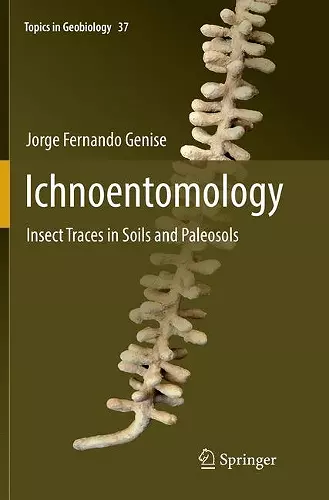Ichnoentomology
Insect Traces in Soils and Paleosols
Format:Paperback
Publisher:Springer International Publishing AG
Published:20th Jul '18
Currently unavailable, and unfortunately no date known when it will be back

This book is devoted to the ichnology of insects, and associated trace fossils, in soils and paleosols. The traces described here, mostly nests and pupation chambers, include one of the most complex architectures produced by animals. Chapters explore the walls, shapes and fillings of trace fossils followed by their classifications and ichnotaxonomy. Detailed descriptions and interpretations for different groups of insects like bees, ants, termites, dung beetles and wasps are also provided.
Chapters also highlight the the paleoenvironmental significance of insect trace fossils in paleosols for paleontological reconstructions, sedimentological interpretation, and ichnofabrics analysis. Readers will discover how insect trace fossils act as physical evidence for reconstructing the evolution of behavior, phylogenies, past geographical distributions, and to know how insects achieved some of the more complex architectures. The book will appeal to researchers and graduate students in ichnology, sedimentology, paleopedology, and entomology and readers interested in insect architecture.
"In 695 pages the Argentine author Jorge Fernando Genise comprehensively describes the basics of ichnoentomology in order to encourage further research. For this very young scientific field, the book is an important milestone in advancing the study of insect traces and insect trace fossils. Insects and their traces in palaeosols have been observed and described by South Americans for about 200 years. Genise therefore had a good starting point. But what he made out of it over the years in his own research is truly remarkable. Luckily for all of us, he has written his knowledge down and published it in the present book." (Lothar H. Vallon, Paläozoologie)
ISBN: 9783319802985
Dimensions: unknown
Weight: unknown
695 pages
Softcover reprint of the original 1st ed. 2017